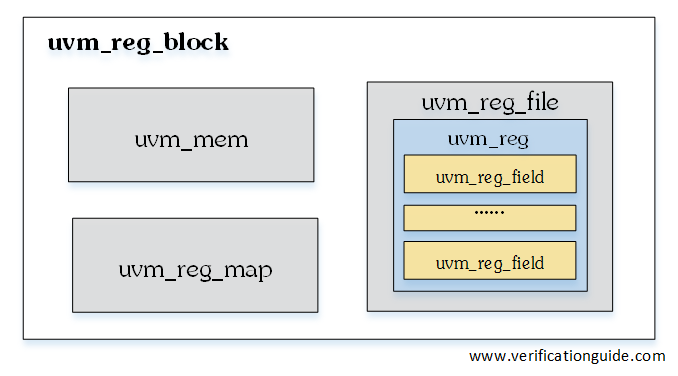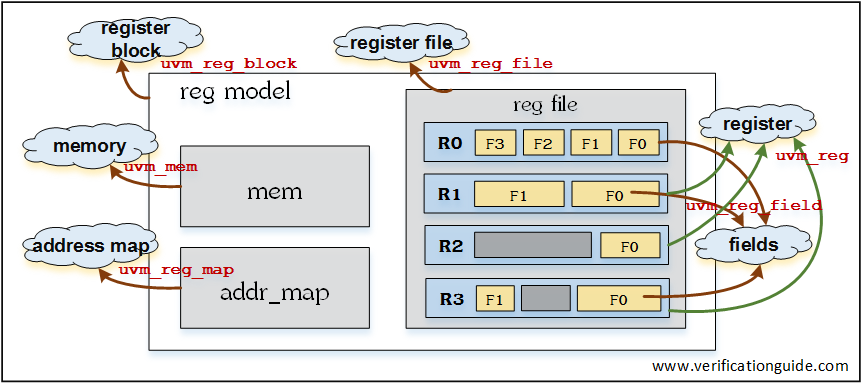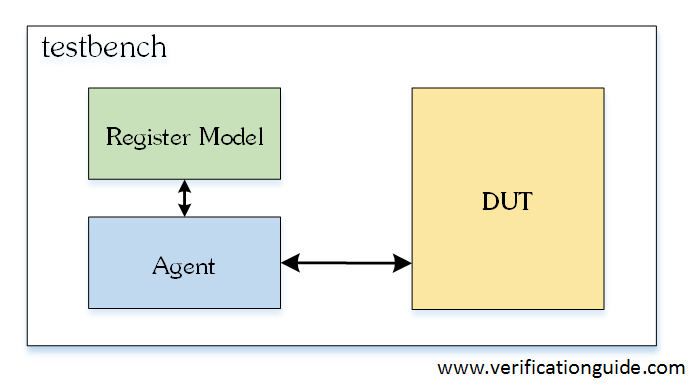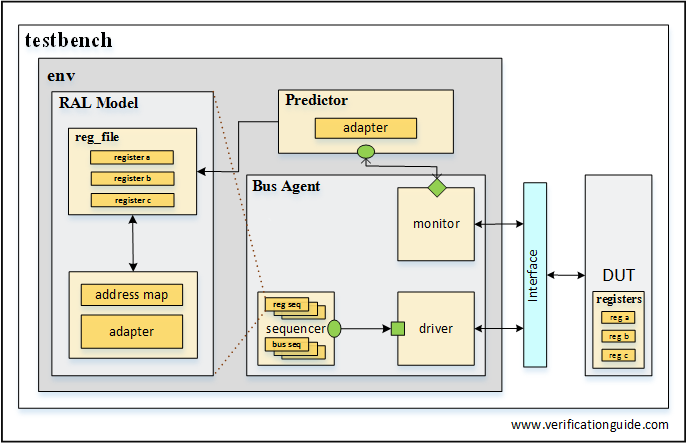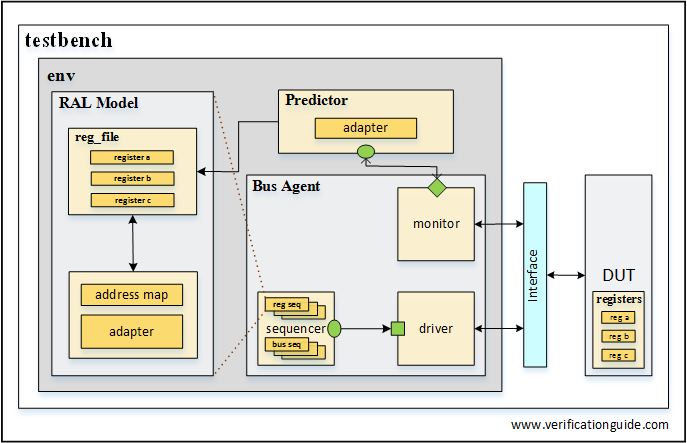Packaging and Integrating a Register Model
Packaging a Register Model
The following practices are recommended, but not required.
- Block types, and all the register, register file, and memory types they require, should be located in separate packages
- Register, register file, and memory types shared by more than one block type should be located in separate packages
- A header file, with all the required import statements to use the register model, should be generated
- A lengthy build() method may be split into several, shorter sub-methods. The sub-methods shall be declared local and called by the build() method
Integrating a Register Model
- A register model must be integrated with the bus agent
- The integration with the bus agent must only be done on root blocks
- Root blocks model the entire DUT and they are the only ones who have access to and knowledge of the externally-visible address maps.i.e in the environment of the testbench
class tb_env extends uvm_env;
reg_model regmodel;
subblk_env subblk;
virtual function void build_phase(uvm_phase phase);
if (regmodel == null) begin
regmodel = reg_model::type_id::create(“regmodel”, this);
regmodel.build();
regmodel.lock_model();
end
subblk = subblk_env::type_id::create(“subblk”, this);
subblk.regmodel = regmodel.subblk;
endfunction
endclass
